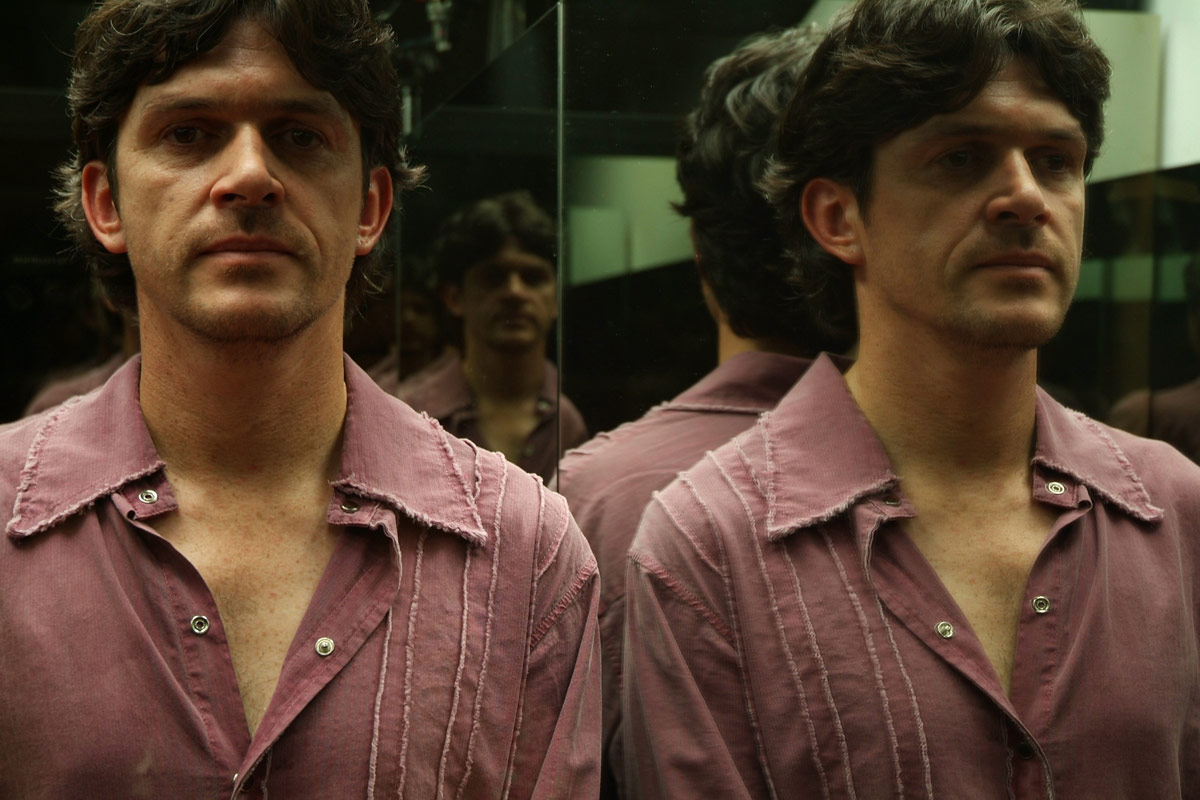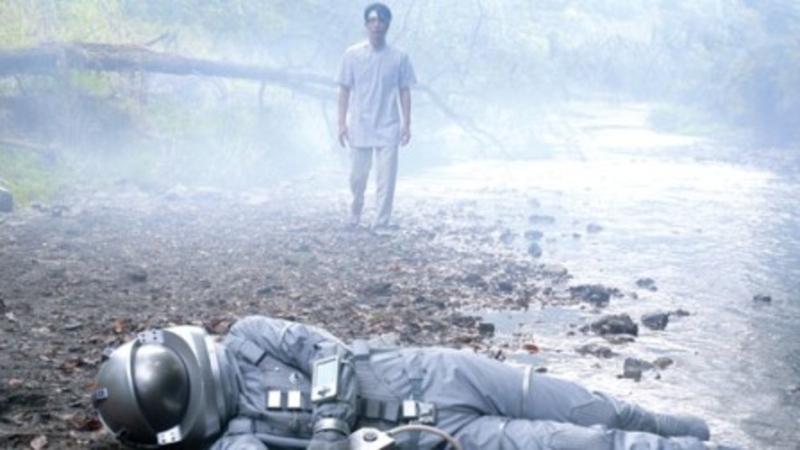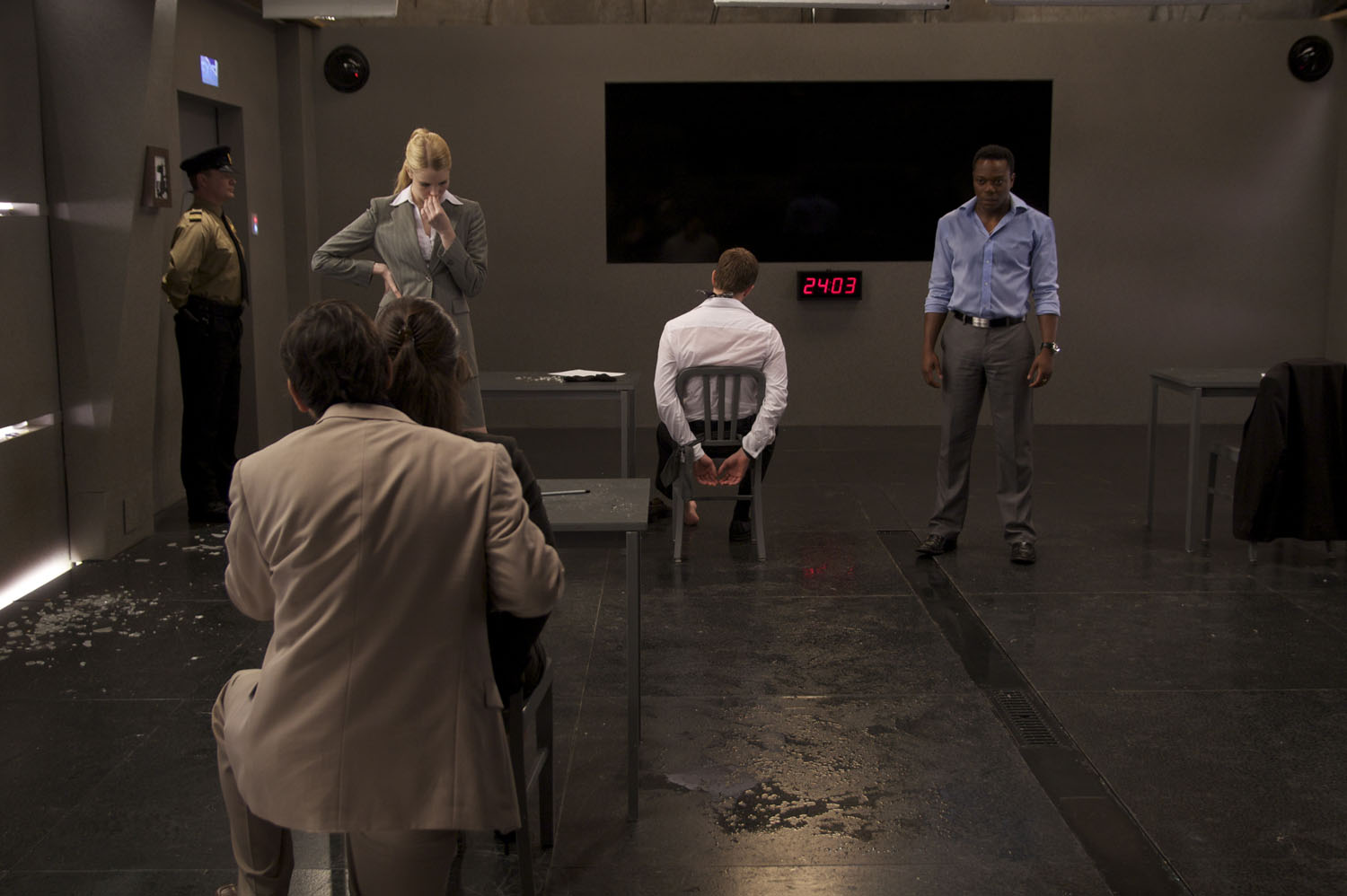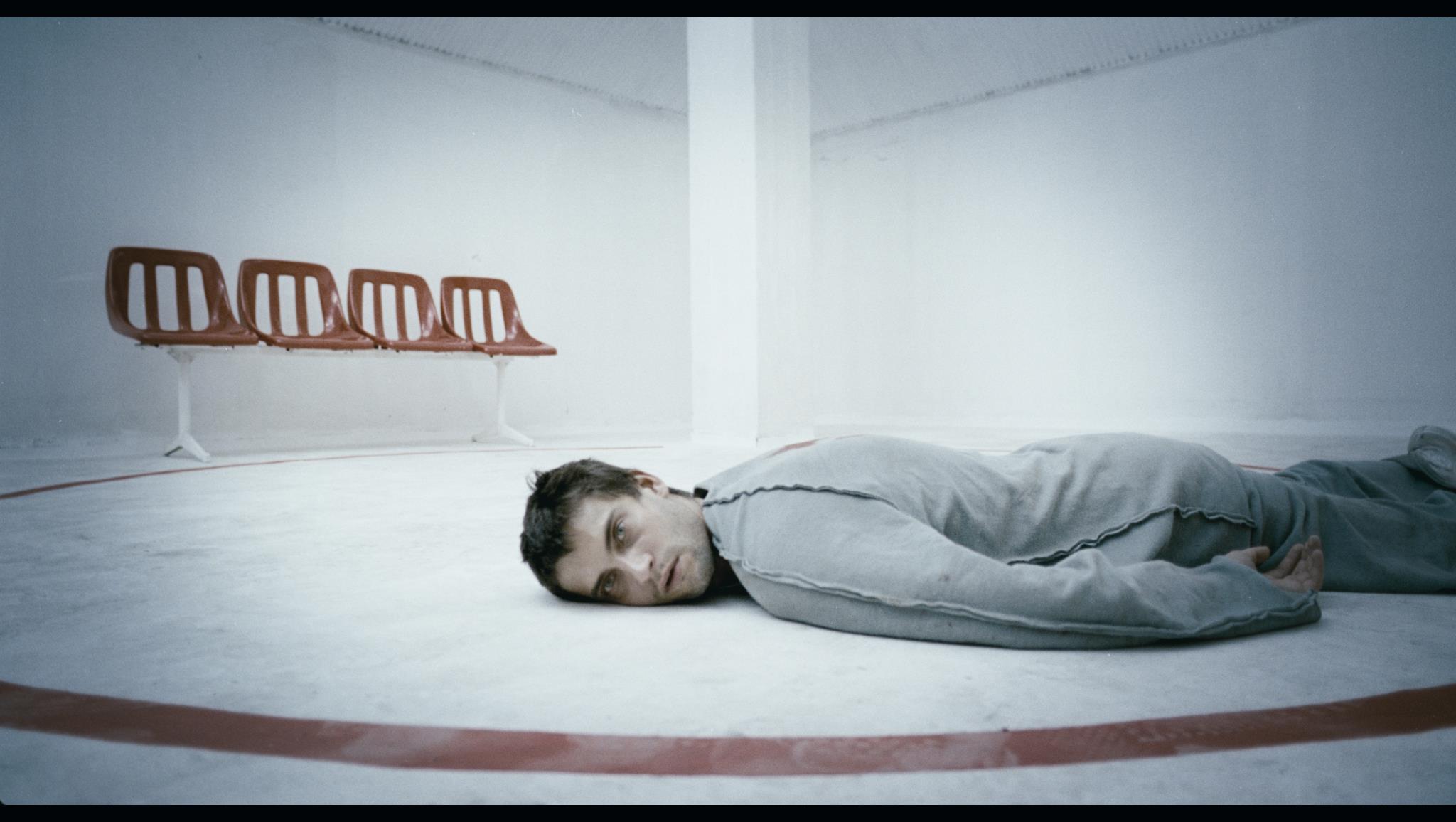6. Ikigami (2008)

In Japan, the “Prosperity Law” provides that 1 citizens out of 1000 – aged between 18 and 24 – will be chosen randomly to die for the state. The death is administered by a a capsule injected in the subjects during their childhood. The purpose of the law is to instil appreciation of life in the population, by creating fear concerning the ephemeral nature of life. The chosen one should receive an “ikigami” (death letter) 24 hours in advance of the sentence.
“Ikigami” presents since the beginning the premises of a classic dystopian tale: an authoritarian society, political violent rituals for the safeguard of the status quo and an aseptic and grey atmosphere. However, the talented Tomoyuki Takimoto is able to give us a double perspective on what it means to live under a dictatorship; in fact, the Japanese director describe both the way the society functions as a whole as much as diving into the conditions of those randomly chosen. What we witness is a double representation of the macro and micro consequences of authoritarian states. The asian cinema environment proves once again to be one of the most exciting, creative and technically flawless output of movies currently. A hidden gem!
7. Yo Soy Otro (2008)

A system engineer named José (Héctor Garcia) discovers on his skin signs of a yet to be classified disease called “lytomiasis”. This illness creates a second layer of skin, comprised of voracious bacteria. Things became absurd and violent when José discovers that, all around the city, many replicas of himself are infected just like him; moreover, these doppelgängers are violently pursuing the elimination of each other, while – at the same time – being ready to kill whoever. The film – written and directed by Óscar Campo – mixes in an interesting fusion sci-fi, black comedy and thriller and present us with two main themes. One one hand, we have the personal struggle and path of the protagonist José, who’s facing almost certain death; the discovery of the mysterious “lytomiasis” will show us what can possibly go through the mind of a human being in extremes situations. On the other hand, the film doesn’t shy from taking a stand and criticising the atrocious phenomenon of war and the nefarious consequences of the process of militarisation of societies.
Despite the low budget, director Óscar Campo is able to craft a complete and convincing film, mixing genres and alternating a micro dimensional portray of the human psychology to a macro dimensional critique of authoritarianism.
8. The Clone Returns Home (2008)

Directed by Kanji Nakajima and starring Mitsuhiro Oikawa as the astronaut Kohei Takahara, “The Clone Returns Home” is a powerful tale about the relationship between lie and death. Kohei is an astronaut who decides to partake in a experimental program about cloning. In case of his premature death, Kohei’s body and mind will be regenerated. However, science is always an imperfect discipline and unexpected events are always around the corner.
“The Clone Returns Home” is dominated by a flawless cinematic portray of the story. How many times should it be repeated how important Asian cinema is to the whole movement; most of the movies that comes out are either a manual on how to make movies or a thought provoking tale about existence. Sometimes they are both, but – most importantly – they all are love letters to cinema. Aside form the impeccable technical style, the movie is also extremely fitting in the description of the complexity of the human mind and its emotion. The movie is very complex in its intricate intent, with the duality of life and death as a backdrop for sub-themes related to the concept of body and the element of memory. One of the strongest movie on the list, a necessary view for those who loves hard sci-fi and movies like Solaris.
9. Exam (2009)

Setting: England. Society is polluted by a pandemic. An unknown – but very important – company is looking for a new employee and, after many sessions, eight candidates must undergo the last step. Enclosed in one single room with only eight tables and eight chairs, the selection will bring out the best and the worst in all candidates and the competition will push them to their limits.
“Exam” strikes you for its minimalism and stripped-down esthetic. The movie lasts 80 minutes – just like the duration of the last test – and the production design follows the same idea: one room, eight people, eight tables, eight chairs, eight pencils, eight sheets. When you watch the movie, youll realize that the stylistic choice is instrumental to the screenplay and the behavior of the characters; the bold and simple settings are necessary to bring out the real personalities of the characters and let them show their real faces. Its great how a simple screenplay keeps you on pins and needles from beginning to end, building tension and suspense. On the technical side, the simplicity of the screenplay is carried on in the directing style: abolished of virtuosity and flashy camera work, just solid, linear and clean camera movements. Even the lighting throughout the picture is connected to the twists and the evolution of the screenplay.
Basically, every aspect of the film is instrumental to the story and not the other way around. Exam” – even though its not the most original movie ever and its references to Das Experiment” (2001) are explicit – is great in its simple and peculiar interpretation of the sci-fi genre.
10. 1 (2009)

This movie is the quintessential thought-provoking story. Directed by Pater Sparrow and inspired by “One Human Minute” by the science fiction writer Stanisław Lem, “1” is an investigation on how Reality could be perceived by humans and how imperfect this perception can be, given the vast magnitude of all that exists in comparison with a single individual. In a rare books shop, all the volumes for sale are mysteriously substituted by the same book named “1”; no author nor publisher are mentioned. The book contains statistical knowledge organised in tables, which describe everything that happens in the world during one single minute. An police investigation will be set up to shed a light on this cryptic appearance.
The movie – always oscillating between imagination and reality – hypnotises the viewers, who are forced to judge for themselves the veridicality of the images; at the same time, the ambiguous movement of the plot, between reality and imagination, is paralleled by a specific directorial strategy concerning the camera movements: swinging between the characters in a fast pace, they are designed to instil uncertainty and doubts about what’s real and which point of view is right. “1” is style and substance, combining a sophisticated aesthetic and a creative plot. Don’t miss out!